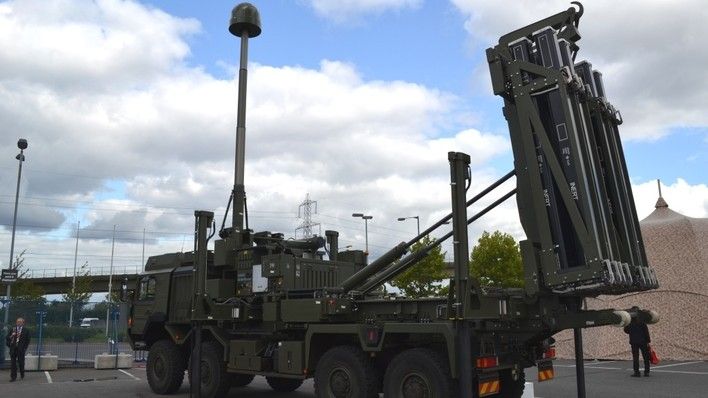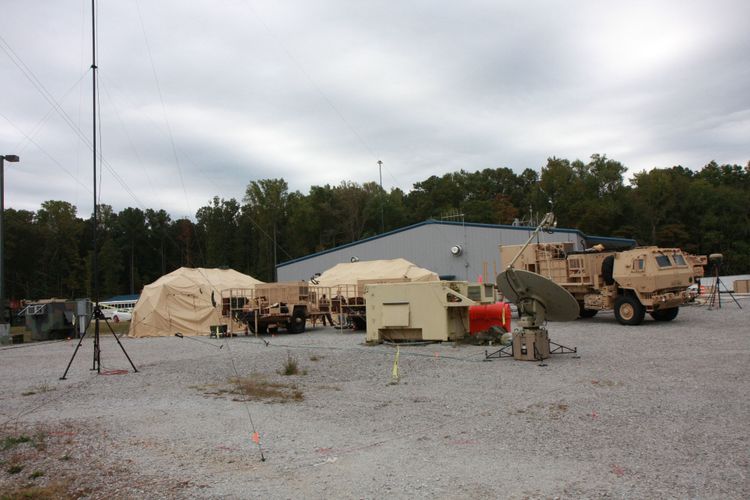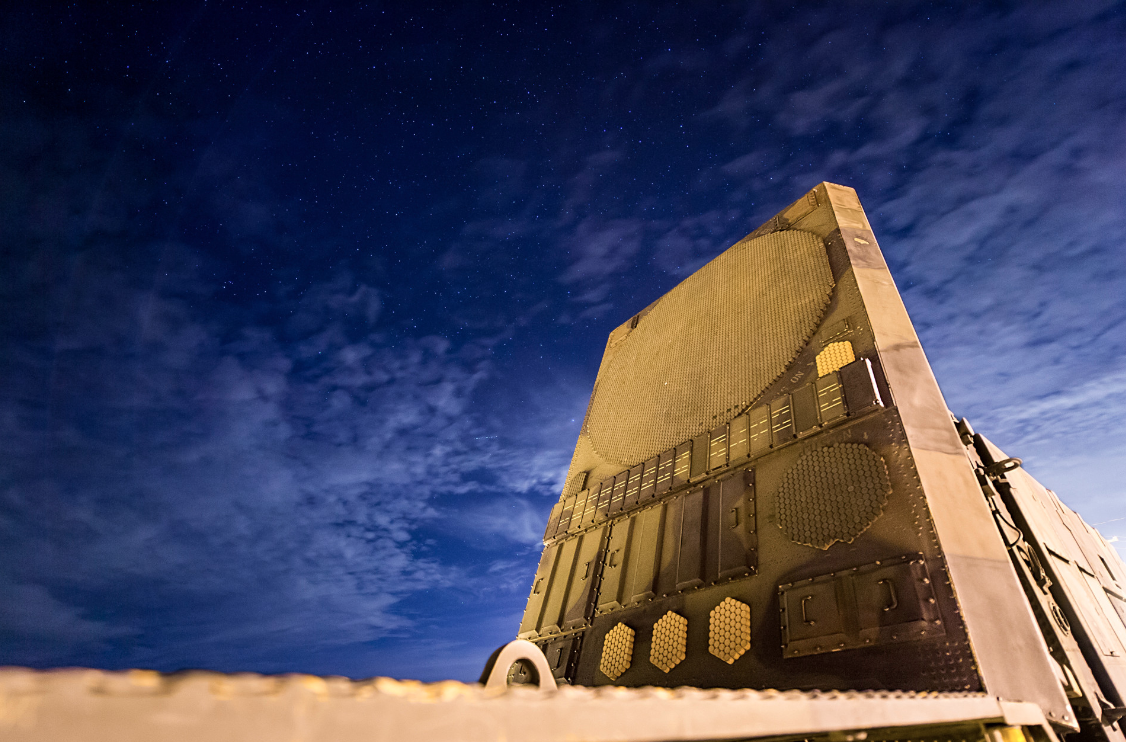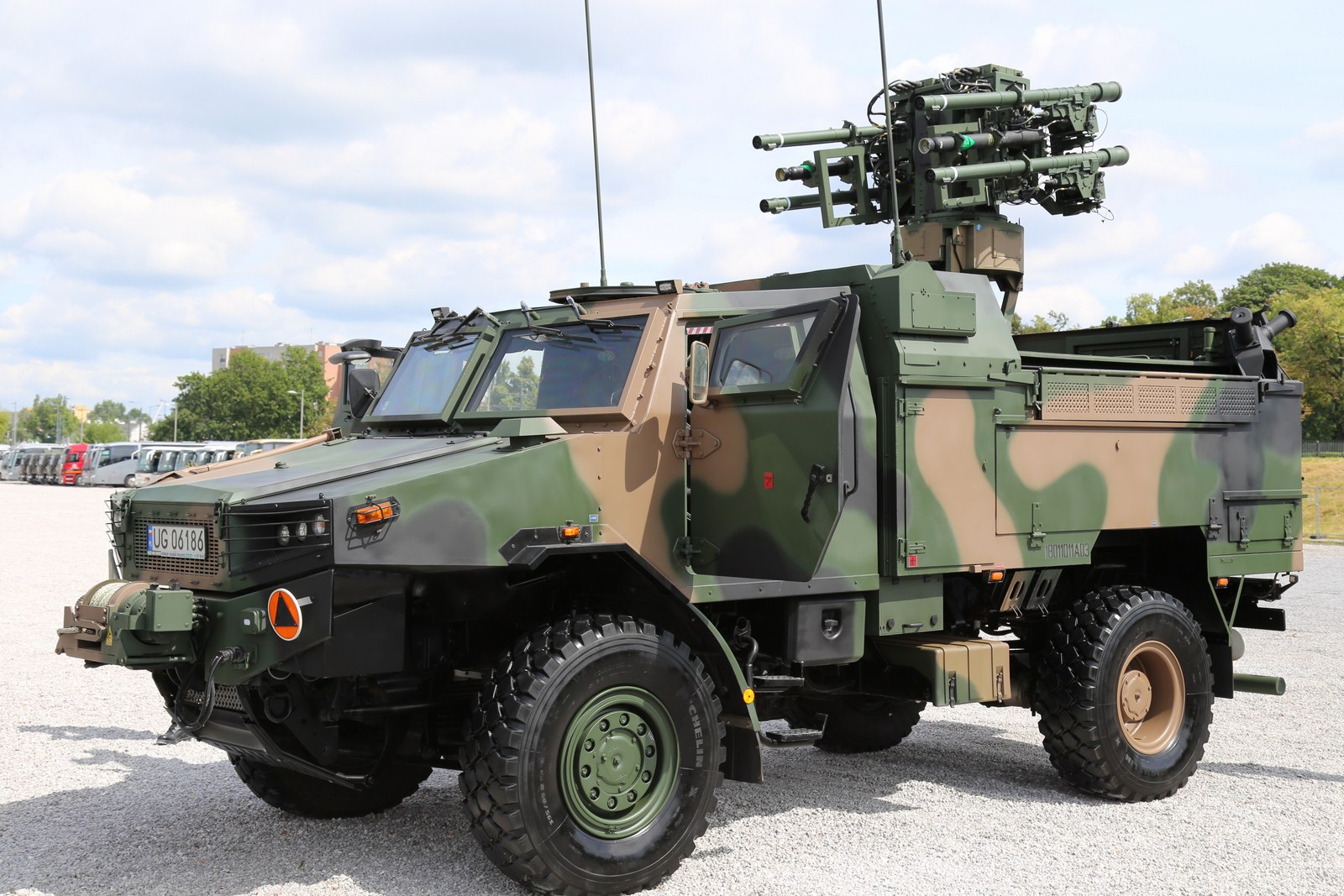Strona główna
British-American Support for the Narew SHORAD Programme? [Commentary]

Northrop Grumman and MBDA UK have undertaken collaboration, in order to integrate the CAMM missiles with the IBCS air defence management system. Solution as such is also offered to Poland, with the Narew SHORAD solution integrated with the Wisła medium range system considered as a viable option.
Trilateral Talks at PGZ
It was in late January when Polish-British-American dialogue took place, with regards to integration of the Polish command and control systems with the IBCS solution. Accordng to PGZ made effectors within the context of the Narew system were discussed as well. The talks involved representatives of three governments, PGZ-Wisła consortium and of the foreign entities.
In practical terms, the talks covered the stages of creating the Polish IADS. IBCS has been acquired within the framework of stage one of the Wisła programme. However, only at the stage two, the system is to be integrated with the Polish sensors (such as the passive PCL-PET and active P-18PL radars). Col. Michał Marciniak, MoD Plenipotentiary for the Wisła programme, told us a few months ago, in an interview for SKANER Defence24, that the Ministry already made a decision to fuse Wisła and Narew programmes which means that both systems are going to be integrated on the basis of IBCS.
Narew programme is aimed at creating a SHORAD system. The whole solution is to be delivered by the Polish industry working with the foreign partners. Sajna multifunctional fire control radar is one of the systems developed by the Polish industry, with the Narew system in mind. At the same time, Narew is to be integrated with Wisła as well. For that reason it would be beneficial to tailor the license-manufactured missiles to work together with IBCS. Even though the release issued by PGZ does not mention it directly, the fact that the British participate in the talks almost certainly suggests that the dialogue concerns integration of the CAMM/CAMM-ER missile marketed in Poland by MBDA UK.
Integration of CAMM and IBCS
Responding to our questions, Northrop Grumman confirmed the fact that work has been undertaken jointly with MBDA, in order to integrate the CAMM effector with the IBCS system. The whole initiative was approved by the US Department of Defense and the UK Ministry of Defence. The company added that the collaborative work "is indicative of the kind of integration that the IBCS design and architecture affords.”. Northrop Grumman also stresses the fact that “to enable more adaptable and affordable integration of any sensor, any shooter” design, the effort would be aimed at enhancing the integration and reducing the cost. Northrop added that “the open architecture design of IBCS enables systems like PATRIOT to be componentised.” The company representatives suggested that “with IBCS, the legacy PATRIOT command and control is replaced with a modern, network-enabled, battle-management and command-and-control system with integrated PATRIOT radars and launchers”.
It is also clear that a number of tests and exercises took place with IBCS being employed, including a test launch of a PAC-3 missile against a target designated by the Sentinel radar, integrated with IBCS. The radar in question is being used by the US Army to control SHORAD systems, such as Avenger or the future IFPC Inc-2I solution. Fusion between Wisła and Narew would allow for a similar integration in which medium range missiles could be used to act against targets designated by the SHORAD battery radars, and an optimal effector could be used on the basis of the air picture provided by the various sensors.
CAMM, on the other hand, is a radar-guided anti-aircraft missile developed by MBDA UK with integration with a number of air defence systems take into account early at the design stage. CAMM is being operated by the Royal Navy now, and around 2020 it is to be replace the Rapier system in the British Army. Also, MBDA is working together with the Italian industry, on the extended range (up to 45 km) CAMM-ER missile.
Potential integration of those systems would make it possible to operate Narew and Wisła solutions together. “IBCS has been designed and is capable to serve as the single command and control system for the Wisła and Narew air and missile defence programmes. Northrop Grumman is actively supporting on-going discussions between the U.S. and Polish governments on the acquisition plans for Wisła and Narew.” - Northrop Grumman stressed. At the same time it has been said that Polish industrial involvement would be dependent on results of those discussions. It was declared, however, that the Northrop Grumman company would make steps towards maximizing the involvement of the Polish industry. The company is continuously working together with PGZ on all aspects of the Wisła and Narew programmes.

Wisła vs. Narew
Decisions on final configuration of the second stage of the Wisła medium range system are of key relevance for the former matter. A proper requests needs then to be sent to the US government. However, low-cost missile and 360-degrees coverage radar play a key role here. In case of the latter element, Poland will probably decide to select the solution that is going to be acquired by the US in the LTAMDS programme. Meanwhile, in case of the low-cost interceptor, the matters are not that clear. It was suggested that SkyCeptor effectors could be used in that role. Col. Marciniak suggested it last year that no consensus has been reached, when it comes to the low-cost missile.
Let us recall the fact that a decision has been made in the US to carry out the LTAMDS programme tests. Lockheed Martin and Raytheon will be able to participate in the sense-off exercise planned in mid-2019, along with the bidders that, according to US government announced placed at Federal Business Opportunities will be able to prove “that they are a viable competitor capable of producing a system of similar complexity”.

Northrop Grumman is also willing to participate in the “sense-off” shootout. Christine Harbison, Vice President, land and avionics C4ISR division told us: “Northrop Grumman looks forward to showcasing our mission solution during the Army’s upcoming “sense-off” for the Lower Tier Air and Missile Defense Sensor (LTAMDS). We have extensive experience in delivering advanced multi-mission solutions for the U.S. Army. The “sense-off” is an opportunity to demonstrate the advanced capabilities of our production-ready, hardware-enabled, software-defined solution.” In the earlier stages of LTAMDS, the company offered a solution based on G/ATOR radar.
Selection of the LTAMDS programme winner is planned during the third quarter of this calendar year (4Q FY 2019). We know, however, that Poland may receive the entry offer concerning the new radar before the US government makes a decision - thus it is not required for the sake of launching the FMS process. Nevertheless, selection of the target solution should make negotiation easier, also within the scope of the industrial dimension.

Decisions concerning the Wisła programme’s Phase II are also tied to the Narew programme. The declarations that had been made by the industry suggest that some of the technology transfer concerning the C2 suite is planned to happen during the phase II. Thus, any decisions within that scope may also be of key importance in case of Narew, at least when it comes to the final shape of the programme. Noteworthy, back in 2017 the Polish industry issued a proposal to accelerate introduction of the Narew system, before the target C2/sensor system is developed. Bystra radars and some command architecture elements used in the Poprad solution were to be used there. Meanwhile, the Sajna radar is still being developed.
The Polish military could receive the first missiles and launchers before all elements of the Narew system are ready, which would mean that the process of introducing new generation of systems could begin earlier. They then could be introduced in the target IADS, which would translate into combat capabilities that would be even greater. One needs to remember that SHORAD programme is broad - 19 batteries/38 fire units. Narew batteries would replace all of the Army’s Kub systems and some of the Air Force’s Osa and Newa-SC SAMs. From the point of view adopted by the military, making a rapid decision on the ultimate shape of the SHORAD system and bringing this programme to a completion would be the most beneficial course of events.
